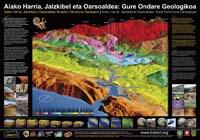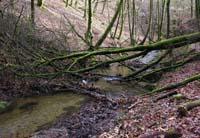LIFE project as support in Aiako Harria
2008/03/01 Lakar Iraizoz, Oihane - Elhuyar Zientzia Iturria: Elhuyar aldizkaria
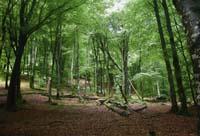
The LIFE Programme is an instrument created to fund environmental initiatives in the European Union. It is a financing line created to promote innovative initiatives that allow to investigate and test the usefulness of new management actions with specific objectives.
The managers of the natural park of Aiako Harria confirmed that the LIFE program was adjusted to its scope. In fact, they were very curious about the results that could have unusual ways to manage. Therefore, in the 2005 call for proposals, a project was developed to improve the management of the natural park.
Together with them, another 182 groups presented their projects. But of all of them only 54 were approved and Aiako Harria was sixth. The beneficiary was the Diputación Foral de Gipuzkoa, through the Directorate General of Montes and Medio Natural. All the actions proposed in the project will be carried out during a period of four years, that is, until the fall of 2009.
Circular project after a target
One of the requirements of the LIFE program is that projects must address various aspects. In this way, all projects must include different activities - research, action execution and dissemination of results- and allocate a certain proportion of the budget for each objective.
The LIFE project of Aiako Harria has four lines of action to adapt to these objectives: to carry out an innovative forest management, recover natural habitats, guarantee the survival of the most interesting species, expand the results obtained and raise awareness about the importance of Aiako Harria.
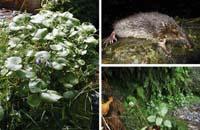
To do this, they hope to obtain concrete results. As for the habitats, it is intended, on the one hand, to improve the state of the beech and oak forests of Aiako Harria and, on the other hand, to introduce own species in the areas in which foreign trees have been planted, as the outer ones are being cut. On the other hand, they intend to protect and conserve the habitats of the species of interest, especially the plant with flower of Soldanella villosa, the fern of Trichomanes speciosum and the Pyrenaic desman Galemys pyrenaicus, and finally, increase the degree of knowledge and awareness of the private owners, management entities and society in general of some sections of the Stone of Aia.
For each of these results, different actions are being carried out. Some of them are innovative performances that had never been performed before. For example, they have tested an action of this type in substitution work of plantations with foreign trees. The first work consists of the extraction of foreign trees (which for their proper exploitation expect the tree to grow sufficiently). And when they leave they fill the gap with native trees.
This innovative performance is the way to remove trees. In the traditional method the trees are dragged and, despite being careful, some plants are damaged. To avoid this, it is being tested to remove the wood cut by cable. In this way, they will have to make fewer transplants behind.
Sometimes they have to invent how to do the job. For example, to increase the structural complexity of the Añarbe river, among other things, logs had to be introduced into the riverbed. Of course, they had the necessary tools for it, but in certain circumstances, to get to leave the trunks at a specific point of the channel, the procedure was invented as they did. In fact, it is not a usual forest activity to leave cut trunks in the river.
The project remains useful
Some experiments will not see the results from day to day, but will need many years. But this experience is very useful both for the managers of Aiako Harria and for the organizations that have done their jobs -- learning new ways of working makes them more competitive -- and for anyone who works in forest management.

And, once the results have been obtained, they will know what actions are worth and which are not. This is very useful for managers when applying for grants, since it is easier to get money if they show that an action they are proposing has given satisfactory results previously.
The opposite can also happen, that is, an action that supposedly would have given good results does not really give that, or that is more expensive than another that they already use. That is, they have the opportunity to compare traditional and new methodologies.
For example, this comparison is being made in the case of the cable mentioned above. In one area the system of tree extraction cable is being used and in another the usual methodology. Both have their advantages and drawbacks: in the area of extraction of cable trees, they will have to make fewer plantations, but it is a very expensive method.
The traditional methodology is much cheaper, but at the end of the extraction they must plant more trees, follow up on the plantation, etc. Within a few years you will see which of the two ways to remove trees is worth it.
Open it to the four winds
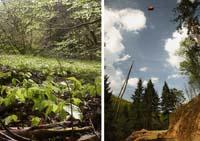
A great effort is being made to make known the results of the management tasks that are being tested. On the one hand, they have a web page (www.lifeaiakoharria.net) where they insert the work done, the conclusions obtained, the published divulgation articles, etc. On the other hand, they make visits for anyone who wants to see a live work, providing all the necessary details and data. Explanatory panels have also been installed in the works, informative brochures have been developed for the dissemination of the project, etc.
In addition, from June there will be an itinerant exhibition that will be transferred to all the municipalities included in the natural park. And to awaken the interest of young people by nature and make known the importance of the LIFE project in Aiako Harria, a video game is being prepared.
The Aiako Harria project, therefore, is serving to test new things. However, the management of a natural space is much more than that, since it is an activity that never ends. The improvement works that were carried out before beginning with this project, and once they have finished, will continue to carry out more work, limiting, as always, the available funds.


Gai honi buruzko eduki gehiago
Elhuyarrek garatutako teknologia




